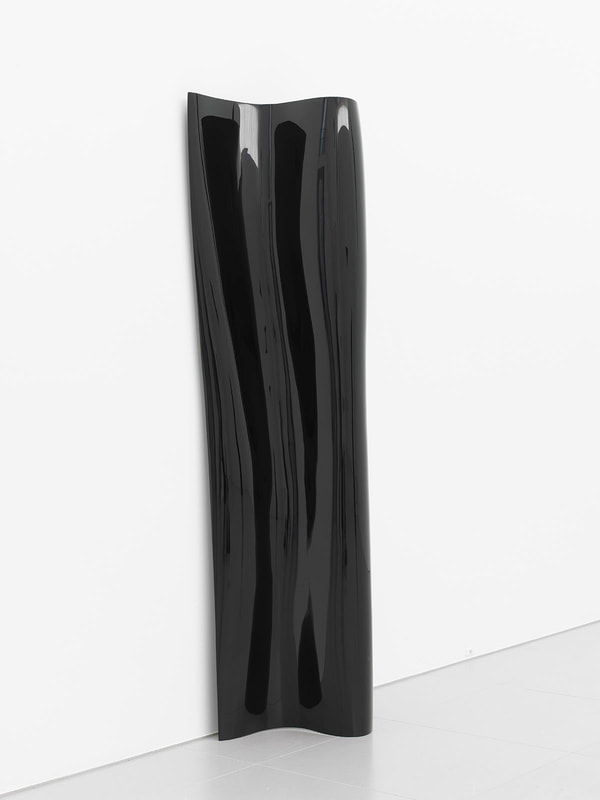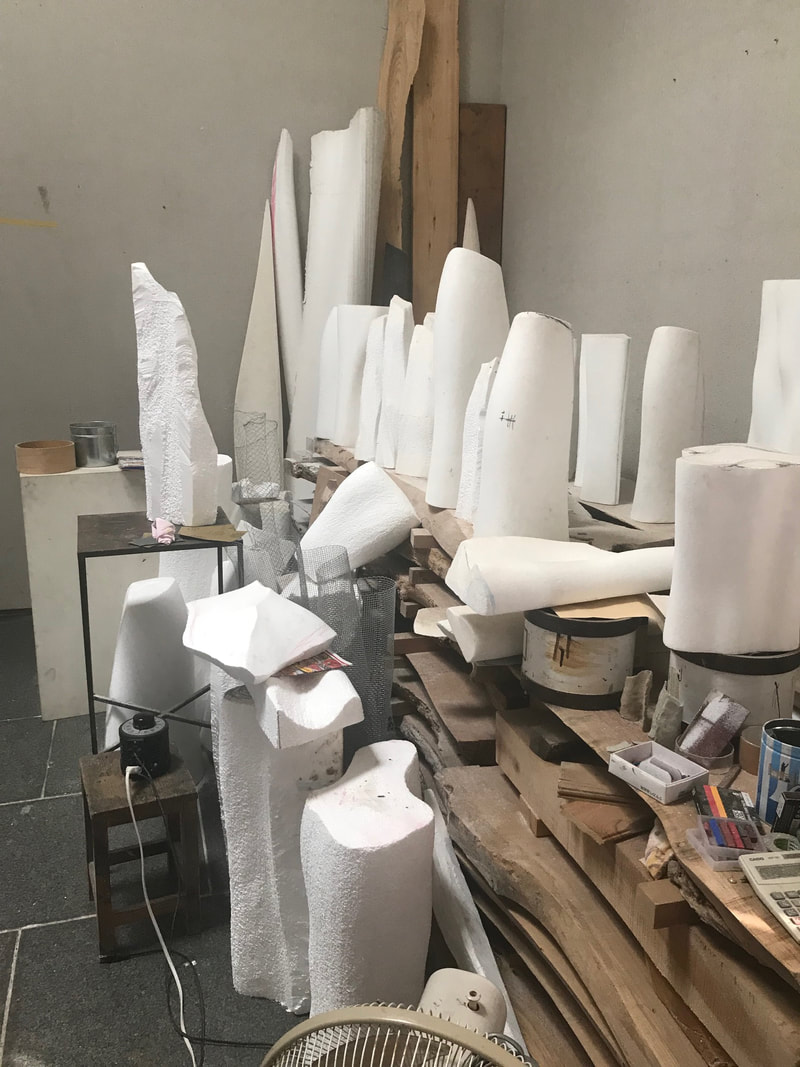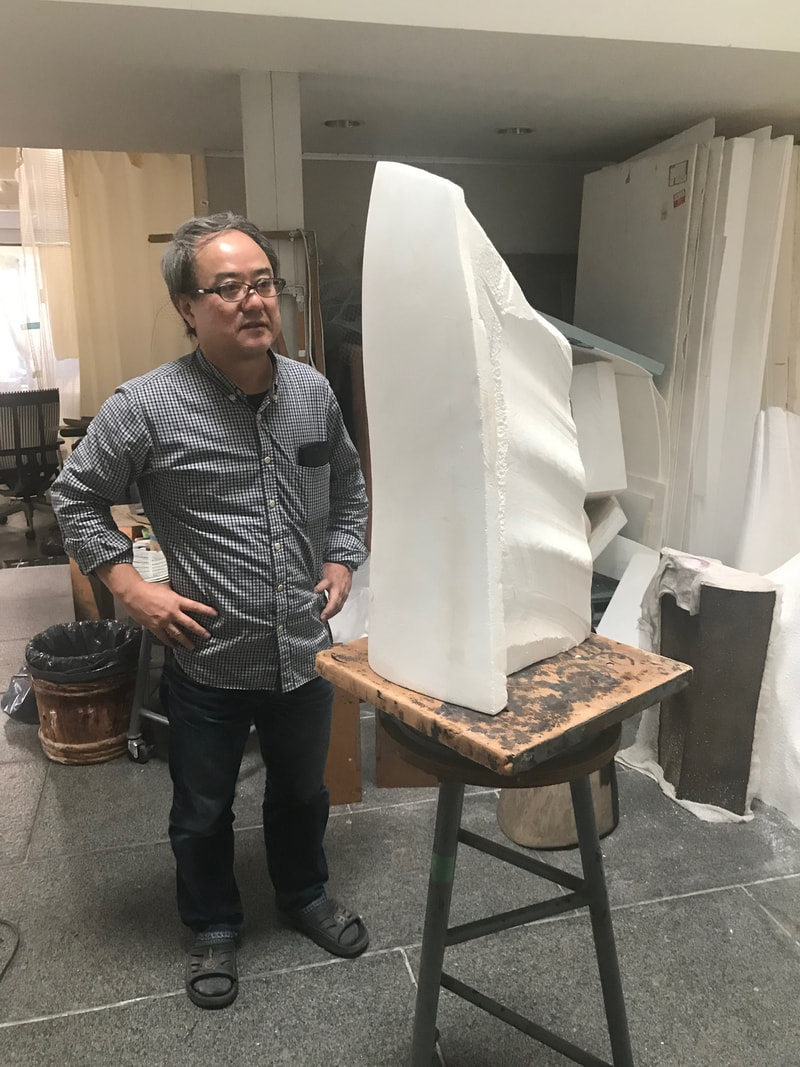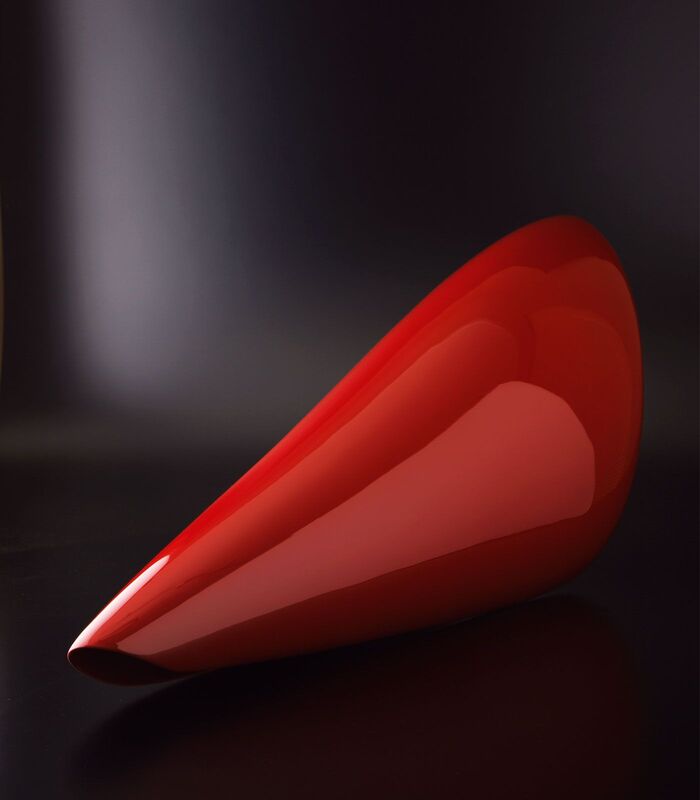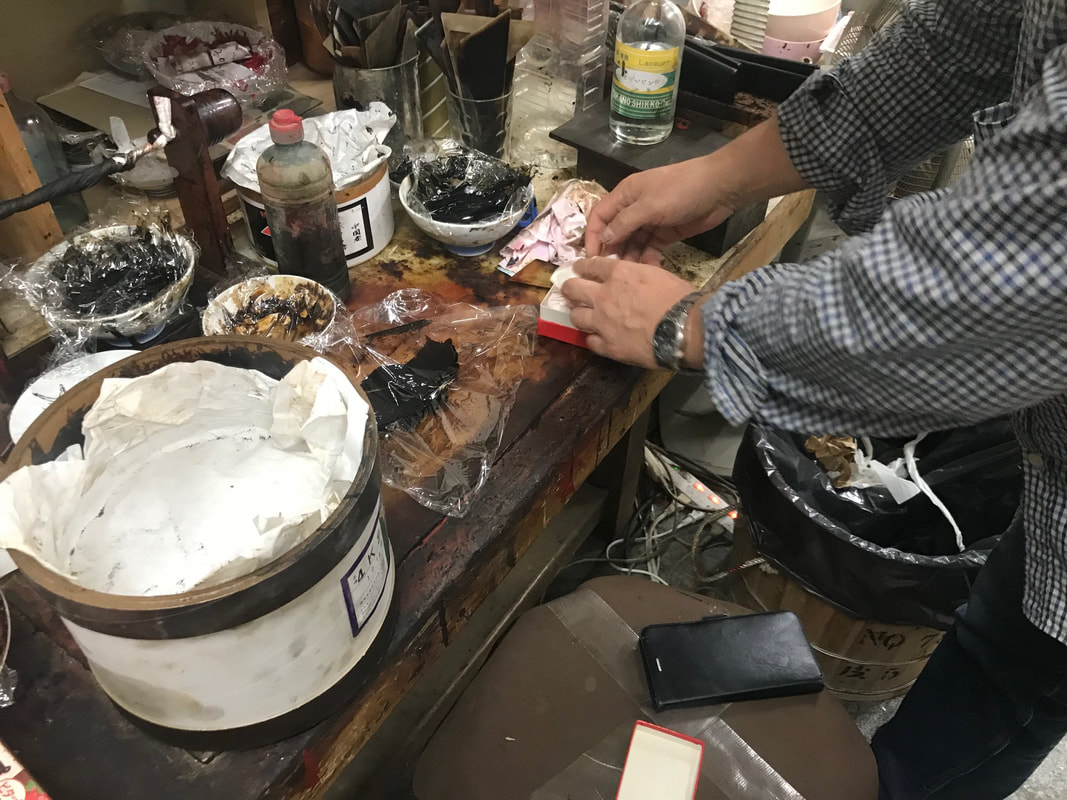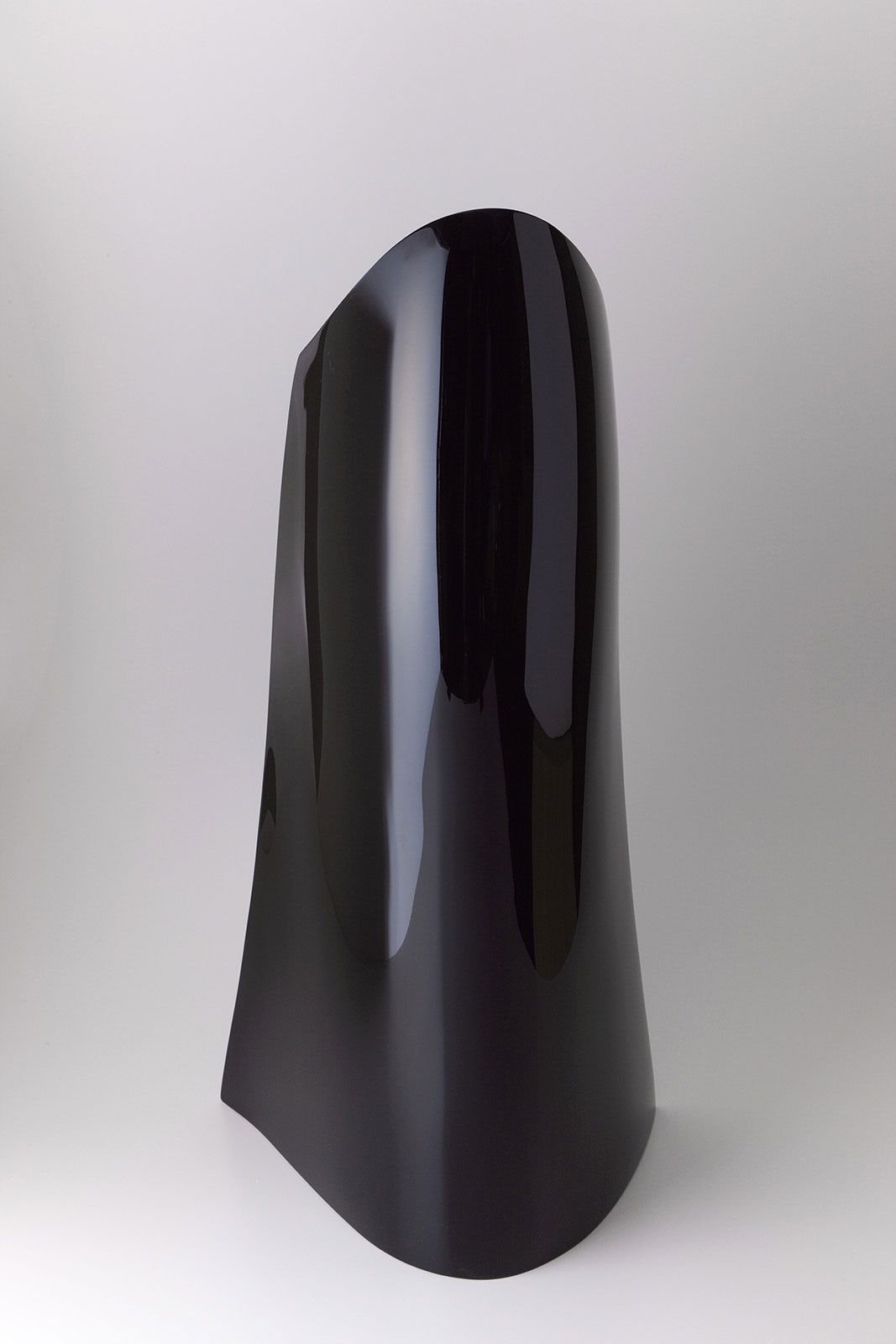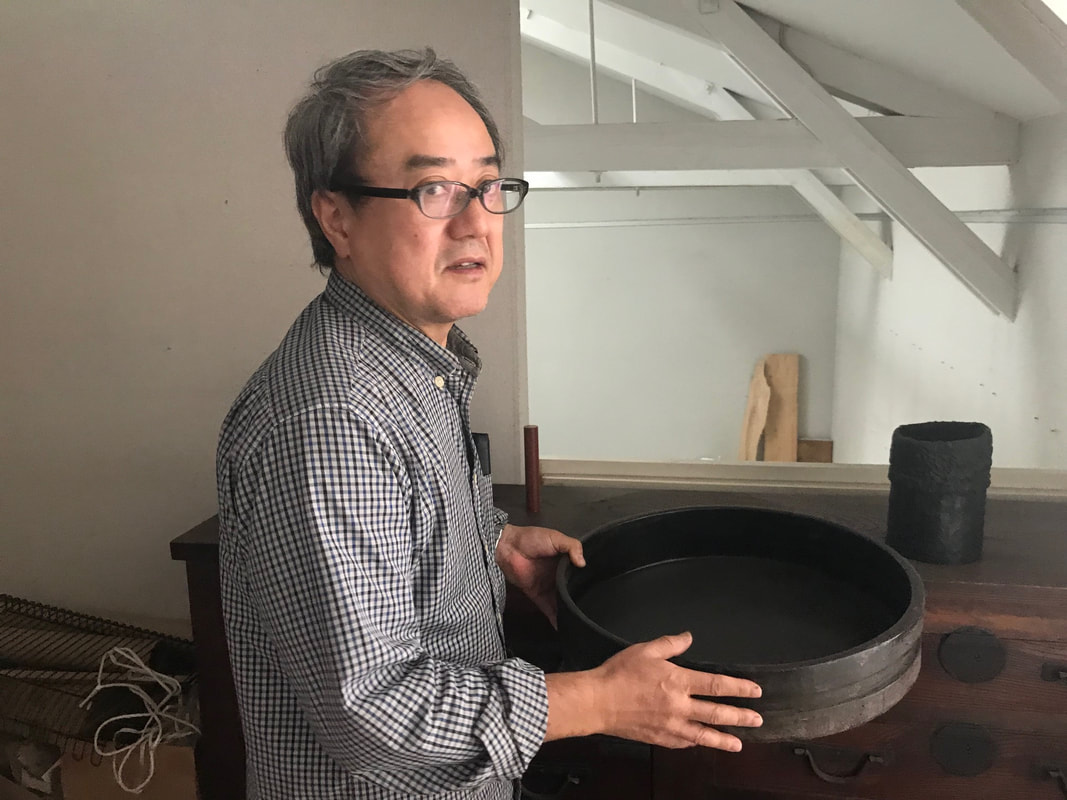He has made Kanazawa, known as ‘the city of lacquer,’ his home twenty years ago. Today, Tanaka, widely considered the leading lacquer artist of his generation has demonstrated to me the process of his radiant sculptures. They are fluid, elegant, abstract, and modernist, and they are all made in the labor-intensive process of Japanese urushi lacquer.
The sap collected from the urushi tree is the natural lacquer, used in Asia for centuries. Because the tree needs a super high level of humidity in order to survive, it can only grow in Asia. While European and American craftspeople had tried to imitate the look of lacquer since the 17th century when imported lacquer screens were in vogue in the West, its special character cannot be achieved by any other raw material.
Tanaka is an educator, teaching generations of Japanese artists how to work with lacquer, the medium he adopted thirty years ago, when beginning to create art. He is not only interested in the history of the art, but always seeks to connect with his own heritage, perceiving the personal way he revists lacquer as a way to bridge contemporary art with Japanese identity. His sculptures are black, red and anything in between. ‘These,’ he told me, ‘are my colors. They are deeper and more powerful than any other color./
All images of objects courtesy of Yufuku Gallery.
The New Face of Lacquer
“The true expression of human spirit,” “like human blood.” In these poetic words, Japanese artist Noboyuki Tanaka (b. 1959) has described lacquer, his medium, when hosting me at his Kanazawa-based studio this morning. In his art, Tanaka embodies everything I have been seeking for in my current trip in Japan: contemporary artists employing traditional Japanese crafts when creating new, innovative, progressive, cutting-edge art.


